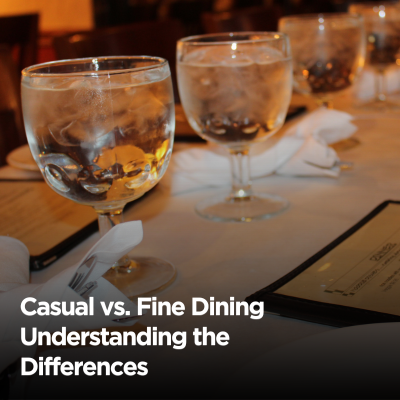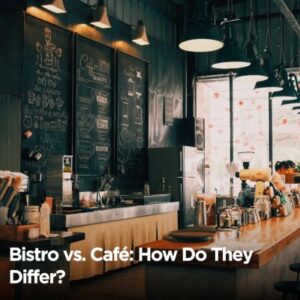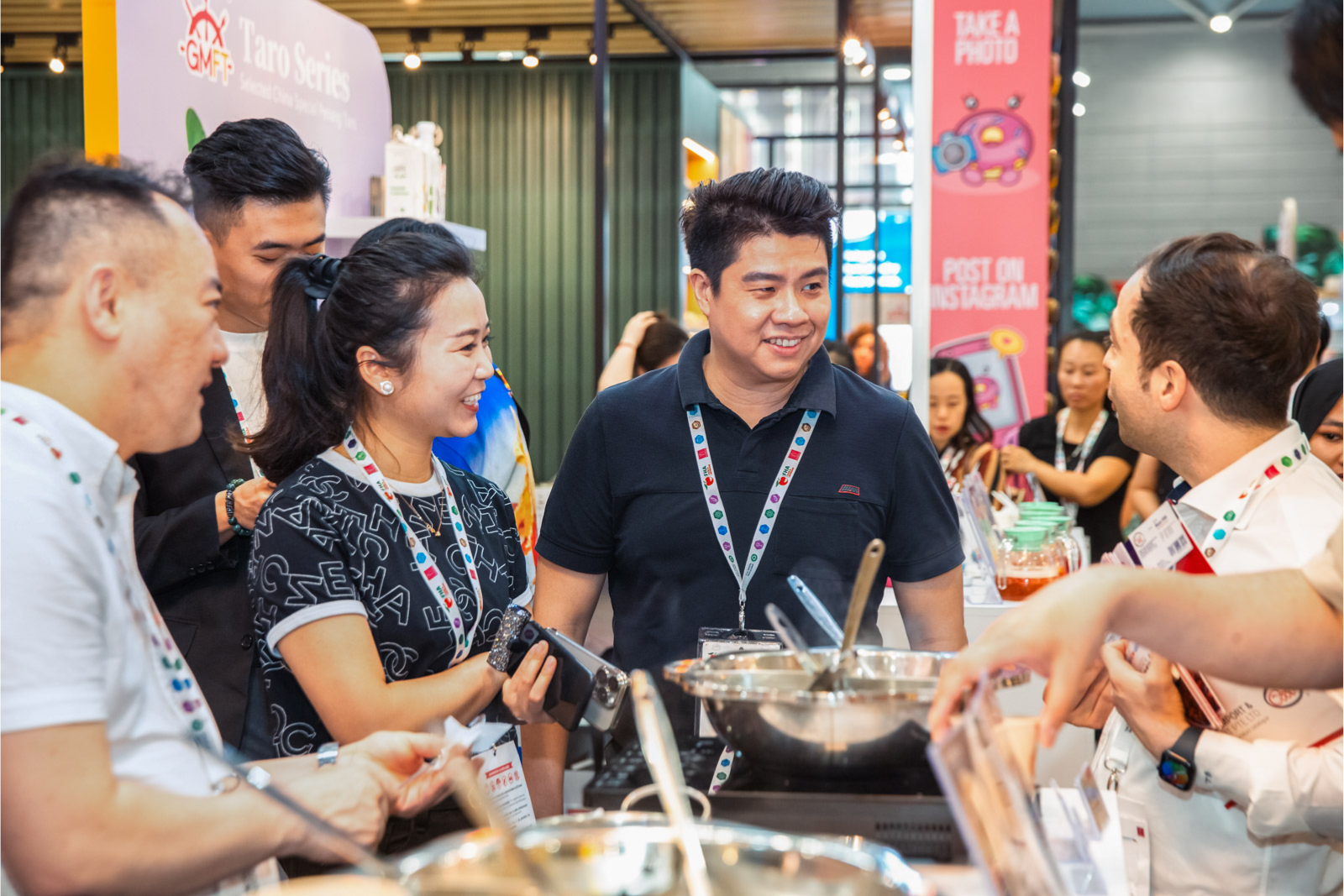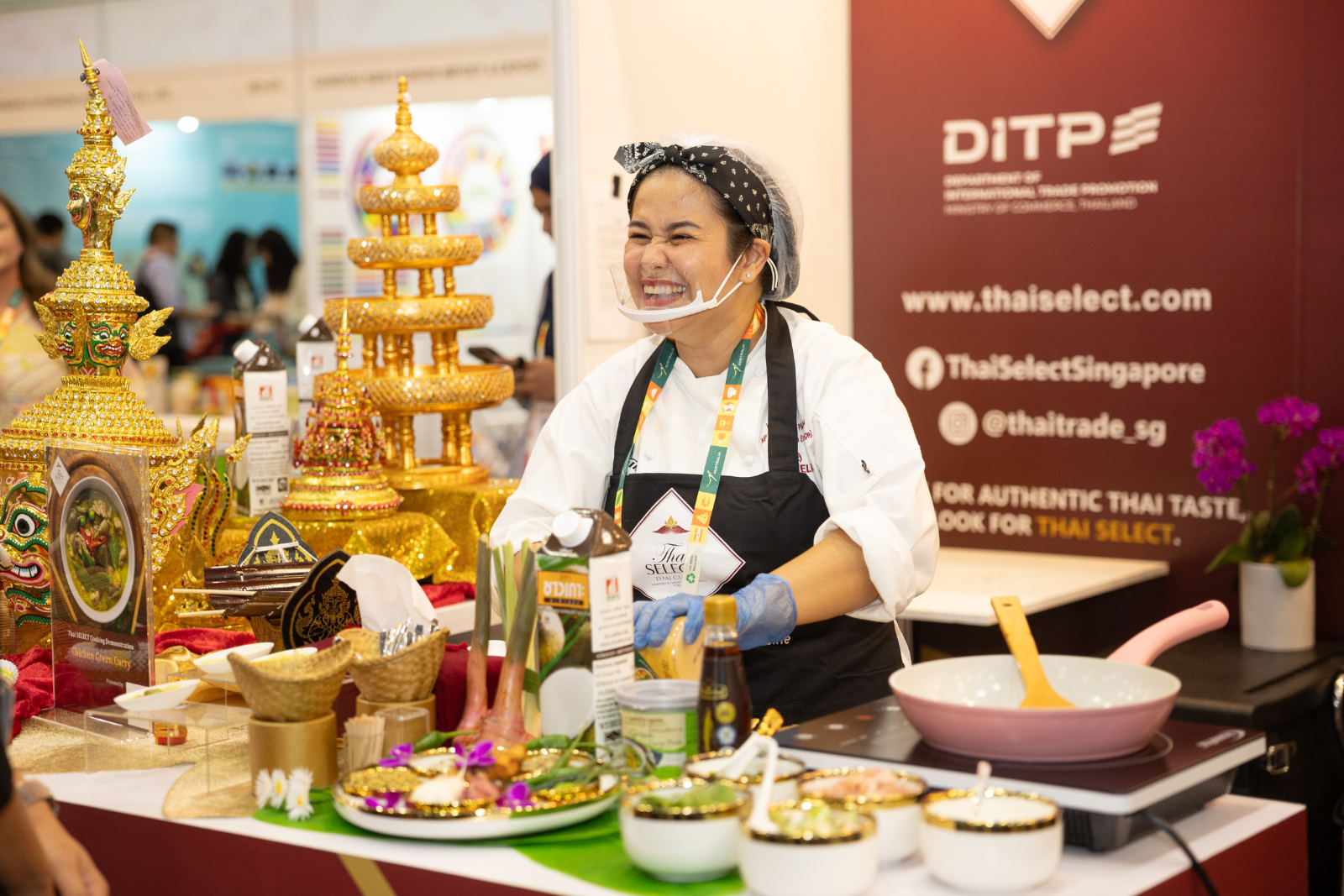Around 39% of people dine out at least once a week or more. This considerable number proves that dining out is more than just a meal. It’s a lifestyle and experience influenced by three main factors: ambiance, service, and cuisine.
Whether looking for an elegant evening or a laid-back bite, dining out with your family, friends, or loved ones generally falls into two categories of full-service restaurants, each offering a unique atmosphere, level of service, and culinary approach.:
- Fine Dining
- Casual Dining
The restaurant industry splits here into two different dining experiences. The difference between fine and casual dining and choosing one is dictated by occasion, budget, and personal preferences. For instance, are you celebrating your anniversary milestone with a multi-course gourmet meal, or prefer a relaxed setting with comfort food?
This blog will explore the key differences between fine and casual dining, highlighting what to expect while you go out for casual vs. fine dining in your favorite restaurant.
What is Fine Dining?
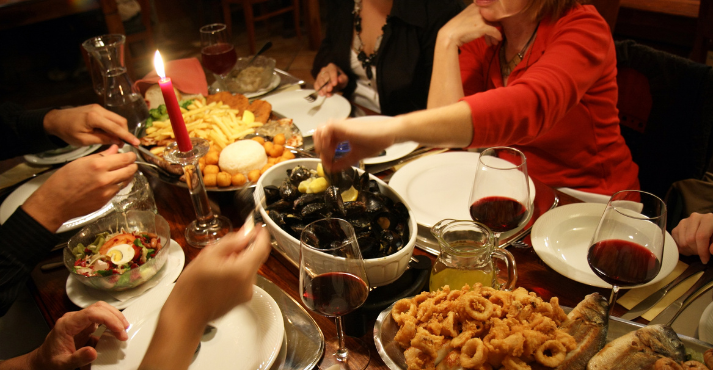
Fine dining is more than just eating; it is a refined culinary experience. The fine dining restaurants focus on exceptional food, high-end food service, and an upscale ambiance. The following characteristics of fine dining set it apart from casual dining:
- Service in fine dining is highly attentive, often with a higher staff-to-guest ratio to ensure personalized attention.
- Chefs in these establishments take pride in creating innovative dishes, often experimenting with unique flavors and techniques.
- Everything from the decor to the table settings is aligned to create a luxurious vibe and atmosphere.
- High-end ingredients, attention to detail in food preparation, and artistic presentation elevate the fine dining experience.
- Multi-course meals, including degustation menus, are typical, allowing guests to savor a carefully crafted culinary journey.
What is Casual Dining?
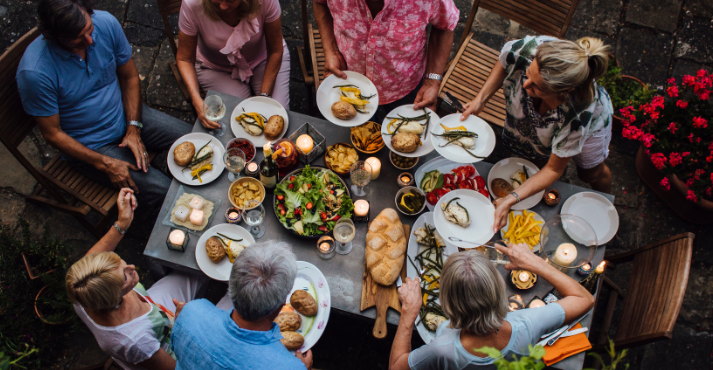
Casual dining offers a more relaxed and approachable atmosphere. These restaurants focus on comfort, affordability, and accessibility while maintaining good food quality. The characteristics of casual dining that differentiates it from fine dining include:
- The ambiance is informal, with simple furnishings and practical decor that create a welcoming setting for families, friends, and individuals looking for a laid-back meal.
- Service in casual dining is friendly yet less formal, allowing guests to enjoy a stress-free experience.
- The diverse menus offer familiar classics and comfort food options catering to a broad audience.
- The food presentation may be more straightforward than fine dining, focusing on flavor and satisfying the customer’s expectations.
Casual vs. Fine Dining – Uncovering Differences
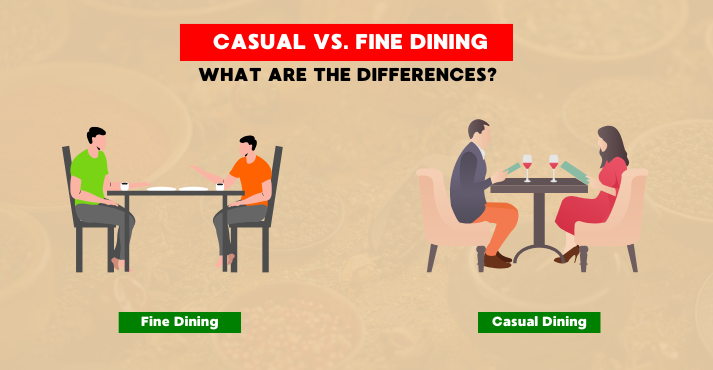
The differences in food, service, menu, vibe, and atmosphere help you choose casual vs. fine dining per your preferences. Let’s look at these crucial differentiating factors one by one.
1. Ambiance and Atmosphere
The restaurant ambiance and atmosphere in casual vs. fine dining is the first difference you experience when you step in.
Casual Dining Ambiance
Casual dining restaurants have a relaxed and welcoming environment. The decor is often simple, featuring comfortable furniture and practical table arrangements.
Bright lighting and open seating create an approachable setting where families, friends, and colleagues can enjoy their meals without formal expectations.
The atmosphere is lively, with background music or ambient noise adding to the casual feel.
Fine Dining Ambiance
Fine dining restaurants focus on elegance and sophistication. Interior design is carefully curated, featuring premium furnishings, mood lighting, and refined decor.
Every detail, from the table settings with fine china and crystal glassware to background music, is designed to create an upscale and intimate environment.
Moreover, the quiet ambiance allows for refined conversation and an immersive dining experience.
2. Decor and Table Settings
The casual vs. fine dining decor is the second visual clue after ambiance that sets your expectations and mood before the food arrives.
Casual Dining Decor and Setting
Casual dining restaurants focus on practicality and comfort. The decor is simple, with functional furniture and minimal embellishments.
Tables are arranged closer together, creating a lively and bustling atmosphere. Table settings are basic, including essential cutlery, napkins, and standard dishware. The goal is to maintain an inviting and relaxed dining space without unnecessary formality.
Casual dining restaurants are generally larger to accommodate more guests. Many have multiple rooms or expansive seating areas, allowing for higher guest turnover. The larger space further fuels the liveliness and social enrichment of a casual setting.
Fine Dining decor and Setting
Fine dining establishments pay close attention to aesthetics and ambiance. Elegant furnishings, carefully selected artwork, and refined lighting create a luxurious setting.
Tables are spaced apart to provide privacy and a more intimate dining experience. Table settings are meticulously arranged, featuring fine linen, polished silverware, crystal glassware, and decorative elements that enhance the upscale feel.
Fine dining establishments are typically smaller, creating a more intimate and exclusive ambiance. Tables are spaced further apart to enhance privacy, making fine dining ideal for romantic dinner dates, business meetings, and special occasions. The smaller size also reinforces the sense of exclusivity and attention to detail that defines fine dining.
In a nutshell, every aspect is designed to elevate the dining experience and reflect sophistication to give you a feel like the entire establishment is up just to serve you.
3. Menu Offerings
The menu is for what you are in the restaurant in the first place, and it plays a vital role in distinguishing casual vs. fine dining.
Casual Dining Drinks and Menus
Casual dining menus are diverse and cater to a wide range of tastes. Guests can expect comfort food, familiar classics, and options for different dietary preferences.
Portion sizes are generous, ensuring a satisfying meal. While the presentation is more straightforward than fine dining, flavor and customer satisfaction remain top priorities. You can modify their meals to suit your taste and preferences.
Casual dining drink menus are simple and include familiar options such as soft drinks, coffee, beer, and house wines. Cocktails are usually limited to well-known recipes, and beverage selections are designed to complement the approachable menu.
Fine Dining Drinks and Menus
Fine dining menus are much on the higher end, crafted to utmost perfection, featuring high-quality ingredients and intricate preparation techniques. Dishes are artistically plated, and chefs often experiment with avant-garde culinary styles.
Multi-course meals, including tasting menus, are part of the routine. Unlike casual dining, fine dining chefs rarely allow menu modifications, as each dish is designed to deliver a particular flavor and experience that is otherwise lost.
The drink selection in fine-dining restaurants is set up to enhance the overall dining experience. Wine lists are extensive, featuring premium and rare selections. Signature cocktails and high-end spirits are commonly offered.
4. Pricing Structure
The pricing in casual vs. fine dining not only depends on the menu but is mainly driven by the overall service and experience. You pay higher in fine dining for every upscale factor discussed here.
Casual Dining Pricing
Casual dining restaurants are more affordable and accessible. Prices are budget-friendly, making them suitable for everyday dining. Ingredients and preparation methods are more straightforward, contributing to lower costs. While some casual dining venues offer premium options, the pricing remains moderate.
Fine Dining Pricing
Fine dining restaurants have a significantly higher price point due to premium ingredients, sophisticated culinary techniques, the types of food and beverage service equipment they use, and exceptional service. The cost reflects the exclusivity, ambiance, and attention to detail.
In fine dining establishments, you pay for a whole dining experience rather than just the food.
5. Service Style
The experience continues beyond the commercial kitchen premises. The level of service and attention is one of the most prominent factors that gives a strong visual and subconscious hint into casual vs. fine dining from the beginning.
Casual Dining Service
Service in casual dining is friendly and efficient but less formal. The staff takes orders, serves food, and checks on guests occasionally. Guests can expect a relaxed pace without overly attentive service. Self-service options like condiment stations are standard, allowing guests to customize their meals.
Fine Dining Service
In fine dining establishments, service is highly personalized and attentive. The staff is trained to provide detailed menu explanations, make recommendations, and ensure an uninterrupted experience.
The staff-to-guest ratio is higher, ensuring each table receives dedicated service. Extra touches, such as unfolding napkins and refilling drinks promptly, enhance the luxurious vibe and experience.
The goal is to give you a feeling of being valued and celebrated at the establishment.
6. Dress Code
Casual Dining Dress Code
Casual dining venues do not enforce strict dress codes. Guests can wear everyday clothing without concern. The atmosphere allows for a spontaneous visit, making it easy for people to dine without planning their outfits.
Fine Dining Dress Code
Fine dining establishments typically have a formal dress code. Guests are expected to wear business casual, semi-formal, or formal attire. This enhances the upscale ambiance and aligns with the refined dining experience.
- Some high-end restaurants may have specific guidelines, such as requiring jackets or coats for men.
7. Dining Experience
Experience is the outcome of all previous factors that differentiate casual dining vs. fine dining and influence the choices of individuals.
Casual Dining Experience
Casual dining is all about comfort, convenience, and accessibility. Guests can enjoy a stress-free meal in a lively setting. The experience is flexible, allowing for quick visits or extended gatherings.
There is no pressure to follow a specific dress code, conduct, or dining structure, making it ideal for informal get-togethers and family outings.
Casual restaurants are widely available in city centers, shopping districts, and suburban areas. They are easy to access and often located in busy commercial zones or within food chains that offer multiple locations.
Fine Dining Experience
Fine dining is an upscale experience that focuses on luxury and exclusivity. From the moment you arrive, every aspect is carefully planned and scripted by staff, from seating arrangements to the pacing of the courses.
Each dish is meant to be savored, and the environment encourages a slower, more immersive dining journey. Fine dining is ideal for special occasions, business meetings, and celebratory events.
Fine dining restaurants are often found in exclusive locations, such as standalone buildings, high-end hotels, or scenic areas like rooftops or waterfronts. These locations enhance the overall experience, sometimes offering stunning views or a private setting.
Most fine dining venues provide valet parking or at least hassle-free complimentary private lots to accommodate guests.
Conclusion
Now you understand the difference between casual vs. fine dining, the distinct experiences, each catering to different moods and occasions.
Opt for fine dining if you are looking for elegance, artistry, and an immersive culinary journey that can be made memorable with your loved ones or on special occasions.
In contrast, casual dining is more about comfort, familiarity, and an easygoing atmosphere.

